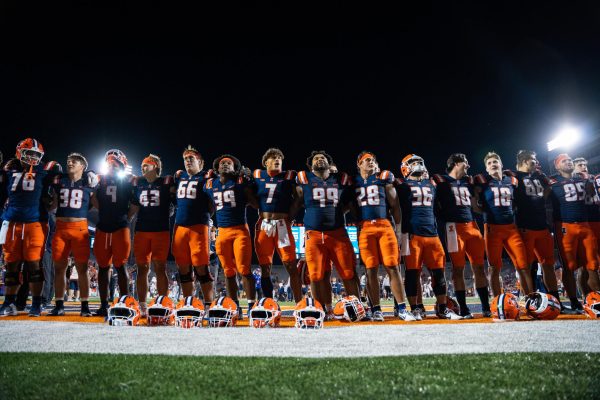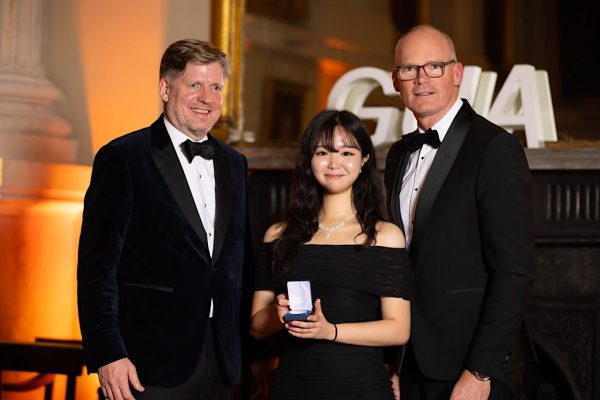University-led center to produce more efficient mobile systems through new cooling design
Aug 30, 2015
Last updated on May 10, 2016 at 05:14 p.m.
What can often hinder the performance of a device is overheating. Most people have experienced, say, a laptop overheating and then running less efficiently as a result. The fans turn on to cool the device, or it’ll shut itself off completely if it gets too hot.
Now, University researchers are working to develop ways to keep mobile systems — as in trains, airplanes, automobiles and ships — cool and prevent overheating in the first place.
The research is being done under the new Power Optimization for Electro-Thermal Systems (P.O.E.T.S.) center, which is funded by the National Science Foundation. The foundation invested $18.5 million in the center for the next five years. If those initial years are successful, it will invest the equivalent amount for five more.
Oftentimes in mobile systems, electrical components are designed to perform a certain function, and the mechanical system must mitigate whatever heat gets generated.
Get The Daily Illini in your inbox!
Andrew Alleyne, director of P.O.E.T.S. and professor in Engineering, said researchers at the center are trying a different approach.
“What we’re doing is from the beginning, we’re trying to co-design these systems such that the mechanical aspects of the design are considered at the same time that the electrical and power aspects of the design are considered,” he said. “It’s very much a multi-faceted systems approach.”
The focus for establishing the desired efficiency thus lies in implementing modifications in the design phase. By designing the systems to handle the needed amount of cooling, Alleyne said it helps a problem that was normally an afterthought in previous designs.
Researchers are also applying what Alleyne described as a novel practice, which is known as cooperation in the system.
Typically, electrical systems are run without necessarily considering thermal constraints until they are hit. When the constraints are hit, the system derates, or operates in a degrading mode where not as much power is put through.
“We’re going to be co-designing and cooperating our mechanical and our electrical systems such that you would utilize the thermal budget you have in a system as a constraint for how much electrical power you apply now and in the future,” he said.
“So you’re building a certain buffer and you’d modulate and throttle down your electrical system performance to observe any type of thermal constraint that you’d have.”
Alleyne’s academic background is suited to the center’s mission to effectively seek out ways to merge electrical and mechanical design components in devices, as he has a primary appointment in mechanical engineering and a secondary appointment in electrical and computer engineering.
Around 12 University personnel and 15 to 20 students will participate in the center’s work. Stanford University, Howard University and the University of Arkansas are also partnering with the University-led center.
Alleyne said researchers are also working to improve currently-available designs for moving thermal power.
“Right now, you can’t really steer heat that easily unless you have it in a pipe and do it in terms of mass flow like fluid, whereas with electricity, you can very easily put down wires and you can have transistors, and you can stop and start the flow of current relatively easily,” he said.
A major market the center is targeting is the electric vehicle market. Alleyne said they want to increase the total power density in vehicles by 10 to 100 times.
The systems P.O.E.T.S. is developing can also apply to things such as mining and construction equipment.
“The things we’re going to look at range from a kilowatt to a megawatt and beyond,” Alleyne said.
The implementation of these systems will not only result in better device performance, but can also have an environmental impact by reducing fuel emissions.
There are more than a dozen partner institutions and companies that will work with the center to potentially implement the systems in their products.
“It’s all pretty early, but there’ll be sort of a membership process and companies will pay a fee to be members and get involved in projects,” said Philip Krein, a professor of Engineering and one of the faculty researchers at P.O.E.T.S.
He said there are different levels of membership, and depending on what the companies choose, they could access patents, inventions, technology and innovations from the center, among other things.
The center’s contract began Aug. 1, and although a search for a permanent home is ongoing, researchers are already working in teams and exchanging ideas. Graduate students are also being brought on board.
“I’m hoping that we’ll have some significant things out of the center within three years and certainly less than five,” Krein said. “But it is really new, leading-edge stuff and it will take a while to get it fully implemented.”
He said one of the purposes of this center is to enable quicker progress and completion of research that may have been ongoing for decades.
Alleyne said this area of research is potentially a large market financially.
“I’m trying to do the market study right now, but the numbers that I’ve heard—it’s sort of in the 100-billion-dollar range,” Alleyne said. “So if we do this right, if we’re able to turn out products we could put into these mobile systems and vehicles, we envision this having a very, very high impact.”





